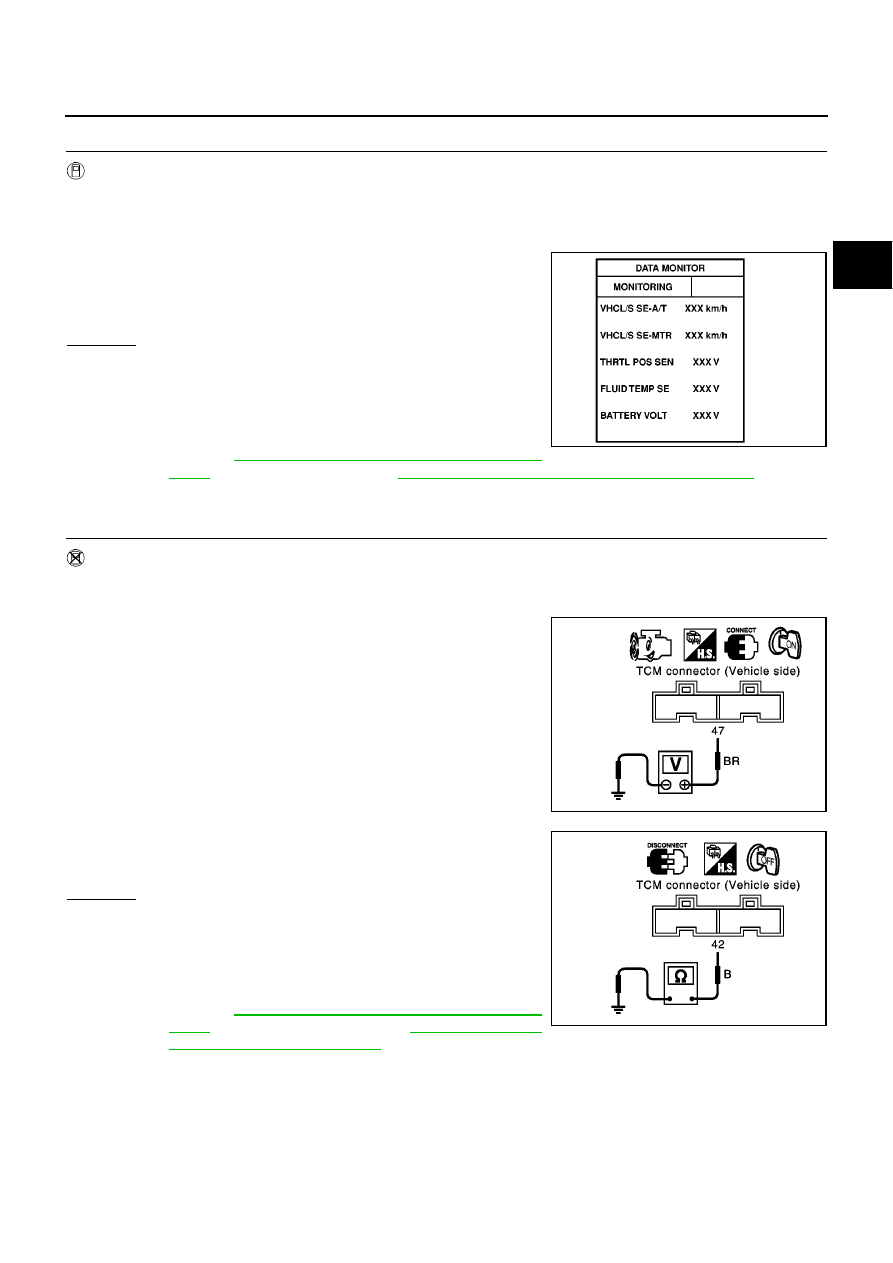Almera Tino V10 (2003 year). Manual - part 25

BATT/FLUID TEMP SEN (A/T FLUID TEMP SENSOR CIRCUIT AND TCM POW-
ER SOURCE)
AT-385
[ALL]
D
E
F
G
H
I
J
K
L
M
A
B
AT
3.
CHECK INPUT SIGNAL OF A/T FLUID TEMPERATURE SENSOR (WITH CONSULT-II)
With CONSULT-II
1.
Start engine.
2.
Select “TCM INPUT SIGNALS” in “DATA MONITOR” mode for “A/T” with CONSULT-II.
3.
Read out the value of “FLUID TEMP SE”.
OK or NG
OK
>> GO TO 5
NG
>> Check the following item:
●
Harness for short or open between TCM, ECM and
terminal cord assembly (Main harness)
●
Ground circuit for ECM
Refer to
EC-139, "POWER SUPPLY CIRCUIT FOR
(With EURO-OBD) and
EC-645, "POWER SUPPLY CIRCUIT FOR ECM"
(Without
EURO-OBD).
4.
CHECK INPUT SIGNAL OF A/T FLUID TEMPERATURE SENSOR (WITHOUT CONSULT-II)
Without CONSULT-II
1.
Start engine.
2.
Check voltage between TCM terminal 47 and ground while warming up A/T.
3.
Turn ignition switch to “OFF” position.
4.
Disconnect TCM harness connector.
5.
Check resistance between terminal 42 and ground.
OK or NG
OK
>> GO TO 5
NG
>> Check the following item:
●
Harness for short or open between TCM, ECM and
terminal cord assembly (Main harness)
●
Ground circuit for ECM
Refer to
EC-139, "POWER SUPPLY CIRCUIT FOR
(With EURO-OBD) and
(Without EURO-OBD).
Voltage
Cold [20
°
C (68
°
F)]
→
Hot [80
°
C (176
°
F)]:
Approximately 1.5V
→
0.5V
SAT614J
Voltage
Cold [20
°
C (68
°
F)]
→
Hot [80
°
C (176
°
F)]:
Approximately 1.5V
→
0.5V
SCIA0738E
Continuity should exist.
SCIA0739E